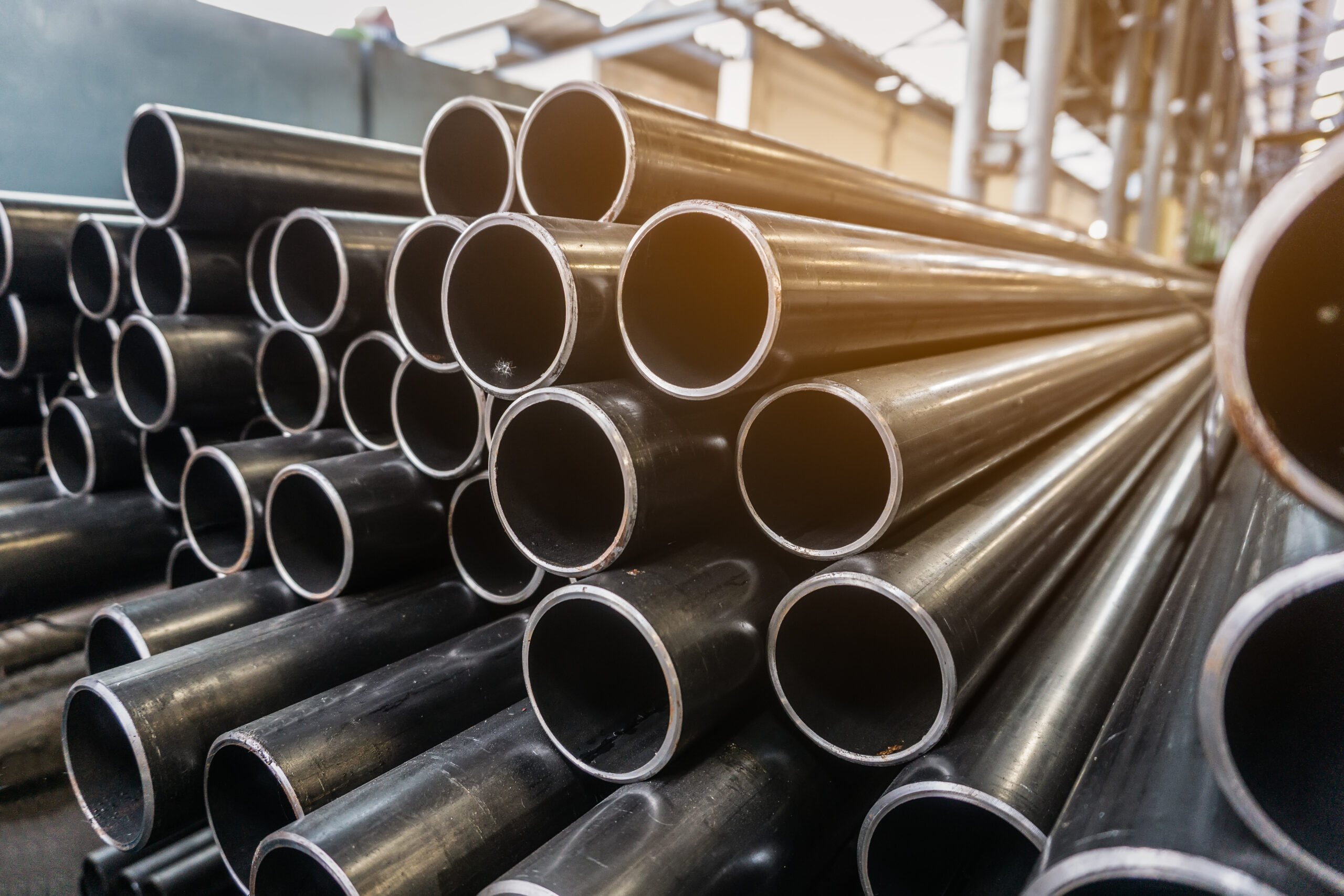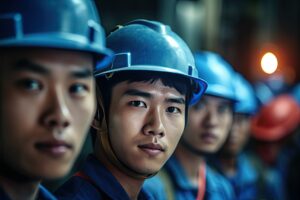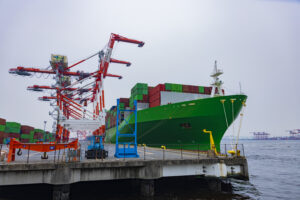In recent years, Japan has solidified its position as the world’s second-largest steel producer, a status that has significant implications for the global steel market. With its advanced production techniques, a robust economy, and a deep-rooted history in steel manufacturing, Japan’s rise highlights not only its industrial capabilities but also its strategic role in meeting global demand for steel. This article explores the factors contributing to Japan’s ascent in steel production, the historical context that shaped its industry, and the challenges and opportunities it faces as it navigates the complexities of the global market.
Japan Emerges as World’s Second-Largest Steel Producer
Japan’s steel industry has experienced a remarkable resurgence, catapulting the nation into the position of the world’s second-largest steel producer, trailing only behind China. This significant achievement has been driven by a combination of strategic investments, technological advancements, and an emphasis on innovation. Notably, Japan’s output of over 100 million tons of steel per year reflects its ability to adapt to shifting global demands and maintain competitive production levels.
The shift in Japan’s steel production dynamics can be traced back to a series of initiatives launched by major players in the industry, including Nippon Steel Corporation and JFE Holdings. These companies have leveraged advanced methodologies to streamline operations and enhance productivity, allowing them to outpace other nations traditionally known for their steel production capabilities.
Moreover, Japan’s focus on high-quality steel products, which cater to automotive and consumer electronics sectors, has positioned it favorably within the global marketplace. This strategic focus not only contributes to Japan’s production statistics but also underscores the value-added approach that Japanese manufacturers have adopted to differentiate themselves from competitors.
As the global economy rebounds from the disruptions caused by the COVID-19 pandemic, Japan’s industrial sector is well-positioned to capitalize on renewed demand for steel. With infrastructure projects and green initiatives gaining momentum, the country’s steel producers are finding new outlets for their products, thus further solidifying Japan’s status within the industry.
The implications of Japan’s rise extend beyond mere numbers; it signifies a shift in global manufacturing dynamics that could reshape trade patterns and competitive strategies worldwide. As Japan continues to innovate and adapt, its role as a key player in the global steel landscape will only become more pronounced.
In summary, Japan’s emergence as the world’s second-largest steel producer represents a critical milestone in the industry’s evolution, showcasing resilience and ingenuity in the face of global challenges.
The Historical Context of Japan’s Steel Industry Growth
The roots of Japan’s steel industry date back to the Meiji Restoration in the late 19th century, when the country sought to modernize its economy and infrastructure. The establishment of the first modern steel mill, the Yawata Steel Works, in 1901 set the foundation for a burgeoning industry that would grow in tandem with Japan’s industrial ambitions.
Post-World War II, Japan faced the monumental task of rebuilding its economy, and the steel industry played a pivotal role in this recovery. The government implemented policies to support steel production, leading to the establishment of new plants and modernization of existing facilities. This period saw Japan rapidly increase its steel output, eventually becoming the leading producer in Asia by the 1970s.
The oil crisis of the 1970s posed significant challenges to the steel industry, prompting Japan to seek efficiency through technological innovation. By investing in automation and energy-efficient processes, Japanese firms managed to adapt to rising costs while increasing productivity. This adaptability would become a hallmark of Japan’s steel sector in the decades that followed.
In the 1980s and 1990s, Japan faced increasing competition from emerging economies, particularly South Korea and China, which began to challenge its dominance in steel production. Nonetheless, Japanese steel manufacturers responded by emphasizing quality over quantity, focusing on specialty steel products that catered to specific industries such as automotive and construction.
The turn of the century marked a new phase of globalization, leading to increased international collaboration and investment in Japan’s steel sector. Partnerships with global firms and participation in joint ventures allowed Japanese companies to expand their reach and competitiveness in international markets.
Overall, the historical context of Japan’s steel industry demonstrates a narrative of resilience and transformation, characterized by adaptation to global trends and challenges that have ultimately strengthened its status as a leading steel producer.
Economic Factors Driving Japan’s Steel Production Surge
Japan’s economic landscape plays a crucial role in driving the country’s steel production surge. A stable economy, characterized by a low unemployment rate and high levels of industrial activity, has fostered an environment conducive to steel manufacturing. As domestic industries, notably automotive and construction, continue to thrive, the demand for steel has seen a notable increase.
Additionally, Japan’s strategic geographic position in East Asia enables easy access to raw materials and international markets. The nation’s well-developed infrastructure, including ports and transportation networks, facilitates timely delivery of steel products to both domestic and international clients. This efficiency is a key factor in Japan’s ability to maintain its status as a top steel producer.
The government’s focus on promoting industrial growth through fiscal policies has also played an important role. By providing subsidies and support for research and development, Japan encourages innovation within the steel sector, ensuring that production methods evolve to meet the changing needs of the economy. This proactive approach has cemented Japan’s reputation for producing high-quality steel products.
Moreover, Japan’s participation in global trade agreements has opened up new markets for its steel exports. With countries increasingly investing in infrastructure and construction projects, Japan’s high-quality steel has found demand in various regions, amplifying its production capabilities. This export-driven growth is a significant contributor to Japan’s resurgence as a steel powerhouse.
The combination of domestic industrial growth, advantageous geographic positioning, government support, and an export-oriented market strategy creates a robust economic environment for steel production. As these factors align, Japan is poised to not only maintain but potentially expand its output in the coming years.
In conclusion, Japan’s economic landscape is a critical driver of its steel production surge, reflecting the interplay between domestic demand, trade dynamics, and government initiatives.
Technological Innovations Fueling Japan’s Steel Advancements
Technological innovation is at the forefront of Japan’s steel industry resurgence, as manufacturers leverage cutting-edge technologies to enhance production efficiency and product quality. The adoption of Industry 4.0 concepts, including automation, artificial intelligence, and data analytics, has transformed traditional steel-making processes into more streamlined operations.
One significant technological advancement is the implementation of advanced manufacturing techniques such as Continuous Casting and Thin Slab Casting. These methods not only reduce waste but also improve the quality of the steel produced, allowing for finer, high-strength materials that meet stringent global standards.
Moreover, Japan’s steel producers have invested heavily in research and development to create environmentally friendly processes. Innovations in carbon capture and storage technologies, as well as the use of hydrogen in steel production, are being explored to minimize the industry’s carbon footprint. These advancements not only address environmental concerns but also position Japan’s steel manufacturers as leaders in sustainable practices.
The integration of robotics in the steel production process has also played a vital role in improving safety and efficiency. Automated systems are now used in various stages of production, from raw material handling to packaging, reducing human error and enhancing the overall productivity of steel mills.
Furthermore, the introduction of smart factories equipped with IoT (Internet of Things) technologies allows for real-time monitoring and data collection throughout the production cycle. This capability enables manufacturers to make informed decisions quickly, enhancing operational efficiency and responsiveness to market demands.
In summary, technological innovations are a driving force behind Japan’s advancements in steel production, providing the tools necessary to improve efficiency, quality, and sustainability in a highly competitive global market.
Japan’s Steel Exports: A Key to Global Markets
Japan’s steel exports play a critical role in the nation’s economy, representing a substantial portion of its industrial output. With a diverse array of steel products—ranging from high-strength automotive steel to specialty alloys—Japan has positioned itself as a reliable supplier for global markets. In recent years, the demand for Japanese steel has surged, fueled by infrastructure projects and economic recovery in various countries.
The country’s emphasis on quality over quantity has become a hallmark of its export strategy. Japanese steel products are renowned for their durability and performance, making them highly sought after in sectors such as automotive manufacturing and construction. As global standards for materials continue to rise, Japan’s reputation for producing high-quality steel has cemented its position in international markets.
Furthermore, Japan’s strategic trade partnerships with various nations enhance its ability to export steel. The pursuit of free trade agreements has opened new avenues for Japanese steel manufacturers, allowing them to access emerging markets in Southeast Asia, North America, and beyond. These agreements not only reduce tariffs but also promote cooperation in technology and innovation, further bolstering Japan’s competitive edge.
The global shift toward sustainable practices also presents opportunities for Japan’s steel exports. As countries prioritize green initiatives, the demand for environmentally friendly steel products is on the rise. Japan’s advancements in sustainable steel production techniques, including reduced carbon emissions and the use of recycled materials, align well with these global trends, positioning Japanese steel manufacturers as leaders in the green steel movement.
However, challenges remain in the form of competition from other steel-producing nations. Countries like China and India, which have rapidly expanded their steel manufacturing capabilities, pose significant challenges to Japan’s export market share. To counter this, Japanese producers must continue to innovate and emphasize the unique value that their products offer.
In conclusion, Japan’s steel exports serve as a vital component of its economy and global positioning. As demand for high-quality and sustainable steel products grows, Japan’s capacity to adapt and leverage its strengths will be crucial in maintaining its competitive advantage in the international steel market.
Impact of Domestic Demand on Steel Manufacturing
Domestic demand is a powerful force shaping Japan’s steel manufacturing landscape. The country’s thriving automotive industry, which is heavily reliant on high-quality steel, remains one of the largest consumers of domestic steel production. As automakers continue to innovate and expand their production capabilities, the demand for steel has seen a corresponding increase, driving growth within the steel sector.
Construction is another sector that significantly influences domestic steel demand. With Japan’s ongoing urban development projects and infrastructure upgrades, including the construction of roads, bridges, and public transportation systems, the appetite for steel remains robust. This demand not only supports the steel industry but also contributes to the broader economic recovery post-pandemic.
Additionally, Japan’s proactive government policies, aimed at stimulating economic growth and infrastructure development, have further bolstered domestic demand for steel. Initiatives to promote eco-friendly construction and energy-efficient buildings have created new opportunities for innovations in steel products, appealing to a market increasingly focused on sustainability.
Moreover, as Japan faces an aging population, there is a growing need for infrastructure that accommodates the needs of the elderly. The construction of age-friendly housing and facilities is expected to contribute to sustained demand for steel in the coming years. This demographic shift underlines the importance of flexible and adaptive production strategies within the steel industry.
The interplay between domestic demand and international markets is also noteworthy. As Japan’s economy stabilizes, the steel produced for domestic consumption can potentially free up resources for exports. This dual approach allows for a balanced focus on both local needs and global opportunities, ensuring that Japan remains a key player in the international steel arena.
In summary, domestic demand significantly impacts Japan’s steel manufacturing, driven by robust industries such as automotive and construction. As these sectors continue to evolve, so too will Japan’s strategies for steel production and distribution, balancing local needs with global market dynamics.
Competitive Landscape: Japan vs. Other Steel Giants
In the global steel industry, Japan faces fierce competition from other steel giants, particularly China, India, and South Korea. China, as the world’s largest steel producer, has been aggressive in expanding its production capacity, often leading to oversupply and price fluctuations in the market. This competitive landscape necessitates that Japan’s steel industry devise strategies that leverage its strengths, such as high-quality production and technological innovation.
South Korea, with its own robust steel manufacturing capabilities, represents another significant competitor. Companies like POSCO have been able to capitalize on advanced manufacturing techniques and strong domestic demand, positioning themselves competitively in the global market. Japan’s steel producers must therefore focus on differentiating their products and maintaining quality to stay ahead in this competitive environment.
India has also emerged as a formidable player in the steel industry, with plans to boost production significantly in the coming years. India’s growing infrastructure needs and emphasis on steel as a key component of its economic strategy make it a competitor that cannot be overlooked. Japan’s steel industry must be vigilant and responsive to India’s rising capabilities and market strategies.
In response to this competitive pressure, Japan’s steel companies have increasingly focused on niche markets, particularly in high-performance and specialty steel products. By targeting sectors such as aerospace, medical technology, and renewable energy, Japanese manufacturers are carving out a space that may be less susceptible to price competition while also positioning themselves as leaders in innovation.
Moreover, Japan’s participation in global alliances and partnerships can enhance its competitiveness. Collaborating with other nations on steel research, technology exchange, and best practices can help Japan maintain its status as a top steel producer while responding effectively to the competitive pressures from other giants.
In conclusion, the competitive landscape for Japan’s steel industry is complex and dynamic, influenced by the strategies of other major players. Japan’s focus on quality, innovation, and strategic alliances will be essential for navigating this competitive environment and maintaining its leadership position in the global steel market.
Environmental Challenges Faced by Japan’s Steel Sector
As Japan’s steel industry rises to prominence, it also grapples with significant environmental challenges. The steel production process is energy-intensive and traditionally contributes to high levels of carbon emissions, which are increasingly scrutinized in the context of global climate change initiatives. Japan’s commitment to reducing its carbon footprint has led to a pressing need for the steel sector to adopt more sustainable practices.
One of the most pressing challenges is the reliance on coal in traditional steel production methods, which results in substantial greenhouse gas emissions. To address this issue, Japanese steel manufacturers are exploring alternative methods, such as using hydrogen as a reducing agent in the production process. This innovative approach has the potential to drastically reduce emissions, aligning with Japan’s national goals for carbon neutrality.
Additionally, the pressure to innovate is amplified by international regulations and agreements aimed at combating climate change. Japan is a participant in various global climate accords, which mandate emission reductions and promote sustainable industrial practices. The steel industry faces the dual challenge of meeting these regulatory requirements while remaining competitive in a rapidly evolving market.
Water usage and waste management also present environmental challenges for Japan’s steel sector. Steel production consumes significant quantities of water, and managing this resource sustainably is becoming increasingly important. Furthermore, the industry must address waste by implementing recycling programs and finding ways to repurpose byproducts from the steel-making process.
Japan’s commitment to sustainability is reflected in its investments in research and development aimed at environmentally friendly technologies. Initiatives focused on circular economy principles and the integration of renewable energy sources into production processes are gaining traction, showcasing Japan’s proactive approach to addressing its environmental footprint.
In conclusion, while Japan’s steel sector faces significant environmental challenges, the industry’s commitment to innovation and sustainability positions it favorably to adapt to the changing landscape. By prioritizing eco-friendly practices, Japan can not only enhance its competitiveness but also contribute positively to global efforts in combating climate change.
Workforce Transformation in Japan’s Steel Industry
The workforce within Japan’s steel industry is undergoing significant transformation, shaped by technological advancements and changing market demands. As automation and digital technologies become increasingly integrated into production processes, the skills required for workers are evolving. This shift necessitates a renewed focus on training and development to ensure that the workforce is equipped to handle modern steel-making techniques.
Historically, Japan’s steel industry has been known for its skilled labor force, which has contributed to high-quality production standards. However, as automation reduces the need for manual labor in certain areas, the industry faces challenges in transitioning its workforce to new roles. This transformation requires a rethinking of recruitment strategies and a commitment to continuous education and training programs.
Moreover, the aging population in Japan presents additional challenges for the steel industry. Many experienced workers are nearing retirement age, leading to potential skill shortages. To address this issue, companies are focusing on attracting younger talent and providing pathways for career advancement within the steel sector. Initiatives to promote diversity and inclusion are also crucial in revitalizing the workforce and drawing in fresh perspectives.
The integration of technology into the steel production process not only enhances operational efficiency but also creates opportunities for workers to engage in more complex and rewarding tasks. As simple and repetitive jobs become automated, employees can focus on areas such as data analysis, process optimization, and innovation—functions that are critical for maintaining competitiveness in a global market.
Additionally, collaboration with educational institutions is becoming increasingly important. Partnerships between steel companies and universities or vocational schools can help align curricula with industry needs, ensuring that graduates possess the skills necessary to thrive in a modern steel manufacturing environment. This collaborative approach can bridge the gap between academia and industry, fostering a skilled workforce equipped for the future.
In conclusion, the workforce transformation in Japan’s steel industry is a critical factor in its continued success. By prioritizing education, attracting a diverse talent pool, and adapting to technological advancements, Japan’s steel manufacturers can ensure they have the skilled workforce necessary to thrive in a rapidly changing global landscape.
Future Outlook: Japan’s Steel Production Strategies
Looking ahead, Japan’s steel production strategies are poised to evolve in response to both domestic and global challenges. As the demand for steel continues to shift with changing market dynamics and sustainability concerns, Japan’s steel manufacturers are gearing up to adopt more flexible and adaptive production strategies. This outlook involves a commitment to maintaining high-quality standards while also enhancing operational efficiencies.
One key focus area is the ongoing pursuit of technological advancements. As the steel industry increasingly embraces automation, artificial intelligence, and data-driven decision-making, Japanese manufacturers are prioritizing investments in smart factory technologies. This approach not only boosts productivity but also enables real-time monitoring and optimization of the production process.
Sustainability will also play a central role in shaping future strategies. As global demand for eco-friendly materials rises, Japan is uniquely positioned to lead in the development of green steel solutions. Initiatives aimed at reducing carbon emissions and adopting circular economy principles will be critical in maintaining Japan’s competitive edge in the international market.
In addition to technological and environmental considerations, Japan’s steel industry must remain vigilant about geopolitical trends that could influence global trade. As trade tensions and protectionist policies emerge, Japanese manufacturers may need to diversify their markets and strengthen relationships with key partners to mitigate risks associated with reliance on specific regions.
Furthermore, continued collaboration with research institutions and industry organizations will be essential for fostering innovation and ensuring the industry remains at the forefront of advancements in steel production. By leveraging collective expertise and resources, Japan can position itself as a leader in developing next-generation steel products that meet evolving customer needs.
In summary, the future outlook for Japan’s steel production strategies reflects a commitment to innovation, sustainability, and adaptability. By embracing technological advancements and responding proactively to market trends, Japan’s steel industry is well-positioned for continued growth and success in the global landscape.
Government Policies Supporting Steel Industry Growth
The Japanese government plays a vital role in supporting the steel industry, implementing policies aimed at fostering growth and innovation. Recognizing the importance of steel production to the national economy, the government has introduced measures that promote investment, research, and development within the sector. These policies are designed to enhance competitiveness and ensure long-term sustainability.
One of the core components of government support is financial assistance for research and development initiatives. By providing grants and subsidies to steel manufacturers, the government encourages the adoption of cutting-edge technologies and the development of environmentally friendly production methods. This investment ultimately helps Japan’s steel sector remain relevant in a rapidly changing market.
Additionally, the government has prioritized infrastructure development, recognizing that a robust infrastructure network is essential for the smooth operation of the steel industry. Investments in transportation, energy, and logistics not only facilitate the efficient movement of raw materials and finished products but also support the overall growth of the manufacturing sector.
Trade policies also play a crucial role in shaping the landscape for Japan’s steel industry. By pursuing free trade agreements and reducing tariffs, the government opens up new markets for Japanese steel exports. This focus on international








